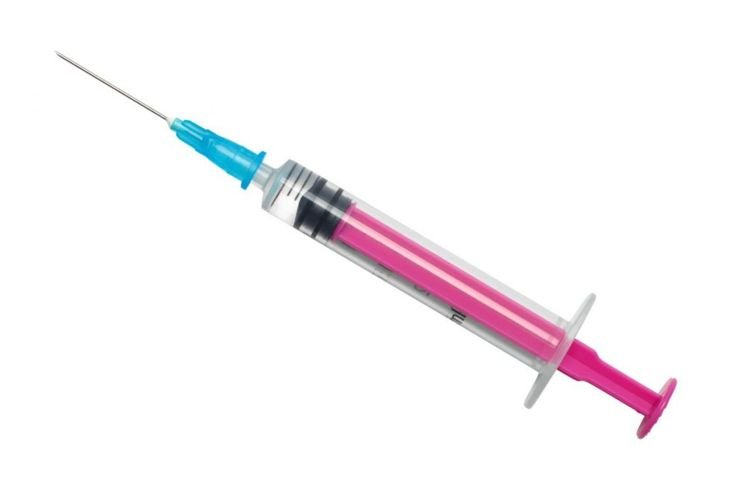Tonsil abscesses or peritonsillar abscesses form in the soft tissue at the back of the throat, around the tonsils. They can be very painful and cause throat blockage in severe cases. Tonsil abscesses usually form when a tonsillitis infection spreads further into the throat. However, they can also occur due to infections of the teeth and gums. The person will usually experience discomfort when swallowing and the throat will appear reddened and inflamed.
What is a Tonsil Abscess?
Tonsil abscesses are sometimes known as ‘quinsy’ and are usually caused by a bacterial infection of the tonsils. The abscess is a pus-filled swelling in the soft tissues around the tonsils that may leak pus and is usually visible upon examination. If the abscess is very large, it may displace the uvula from its usual position.
Diagnosis
Doctors often diagnose tonsil abscesses following an examination. The abscess is usually easy to see upon inspection. The doctor may apply gentle pressure to the inflamed area to determine whether it is producing pus. He or she may send samples of the pus to the lab to determine the cause. Sometimes, medical imaging such as x-rays and CT scans help exclude other conditions affecting the throat and respiratory tract that may have similar symptoms.
Emergency Treatment
In very severe cases, tonsil abscesses are life-threatening when they can cause such serious swelling that the airway is obstructed, preventing normal breathing. In this situation, doctors will act quickly to ease breathing and open the airway by draining excess pus from the abscess. This is usually done by inserting a needle into the abscess and drawing the pus out.
Non-Emergency Drainage
If the situation is not an emergency but the abscess still needs to be drained, the doctor will inject a local anesthetic around the site to relieve pain. He or she may also administer a sedative if the patient is very distressed. Aspiration of pus using a needle can drain the affected area. Alternatively, the doctor may make a small incision in the abscess, using a scalpel. This will allow the pus to drain and reduce the swelling.
Medication
Tonsil abscesses require treatment with antibiotic medications because they develop due to bacterial infection. The most common line of treatment is penicillin. However, doctors may recommend a different antibiotic if the person has an allergy or if lab results indicate another drug would be more effective. These medicines may be taken orally, but initial doses are often given intravenously to ensure the drugs can get to work as quickly as possible. Some people with tonsil abscesses may also find it painful or impossible to swallow tablets.
Tonsillectomy
In certain situations, doctors may recommend a tonsillectomy, a surgery that removes the tonsils completely. This is usually only necessary if something is preventing the doctor from draining the abscess. People with frequent tonsillitis also often require the surgery. Removing the tonsils prevents future infections and, therefore, future tonsil abscesses.
Aftercare
Following treatment for a tonsil abscess, most patients can return home, armed with antibiotics. Some people will need to stay in the hospital, including those who feel severely ill or who are having continued difficulty swallowing. People with diabetes may also be kept in the hospital as this pre-existing condition can cause complications. Children are more likely to require inpatient care with a tonsil abscess than adults because doctors usually perform abscess drainage in children under general anesthetic.
Follow-Up
People with a tonsil abscess require follow-up appointments with their doctors to monitor healing. This is because tonsil abscesses can return. If this happens, the doctor may need to repeat the draining procedure. It is also possible the wrong antibiotics were prescribed to treat the infection. If the inflammation returns, the doctor may suggest a different antibiotic.
Prevention
Preventing tonsil abscesses essentially comes down to reducing one’s risk of contracting tonsillitis. Maintaining a thorough oral hygiene routine can help prevent infections in the teeth and gums, which can help prevent tonsillitis. As smoking raises a person’s risk, doctors recommend cutting down or quitting. If a person believes they have a tonsil or throat infection, seeking prompt medical keep it from developing into an abscess. As mentioned, a tonsillectomy can serve as the final resort to prevent future issues.
Prognosis
Most people who have their tonsil abscess treated quickly will recover well and will not develop an abscess again. However, some people may have complications. This is more likely in people with diabetes, lowered immune systems, and those who did not receive prompt medical attention. It is possible for the infection causing a tonsil abscess to spread further down into the respiratory tract. Complications can include bleeding, pneumonia, and meningitis. It is also possible to contract sepsis if the infection gets into the bloodstream.

 Home
Home Health
Health Diet & Nutrition
Diet & Nutrition Living Well
Living Well More
More




















